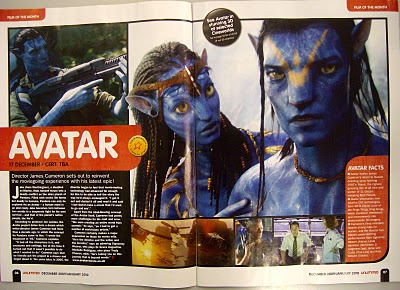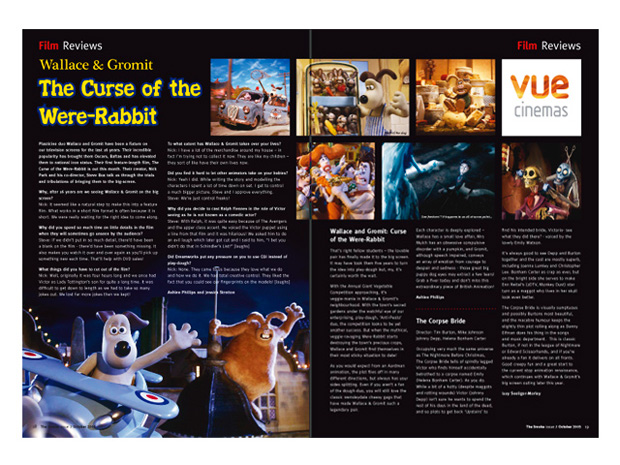Most film magazines such as Empire feature many reviews in their issues. These reviews are useful because not only do they inform the readers about the film, but help people to decide whether or not to go and see the film being reviewed.
Reviews are laid out in all different ways – some are double page spreads, some are only a single page, and some are no more than a couple of paragraphs in the corner of a page. Below I have featured some examples of reviews in different layouts.

The writing in this review on the film Avatar only takes up one page, whereas the rest of the feature is made up of stills from the film itself. There is also a small box to the side with facts about the film. This is an example of how sometimes the reviews themselves take up very little space.
This next example shows multiple reviews on one page, with appropriate pictures from the films being featured. This is a good way of laying out reviews as people won’t be reading too much on one film, they can move onto another review if they don’t like the one they’re reading.
Using the script for the film E.T The Extra Terrestrial, I reviewed the film in a magazine layout. I feel that my review may not have been very strongly written, but I chose to use one page for my review. In it I talked about the plot, my opinions on it and some of the techniques used when filming. Here it is below.











